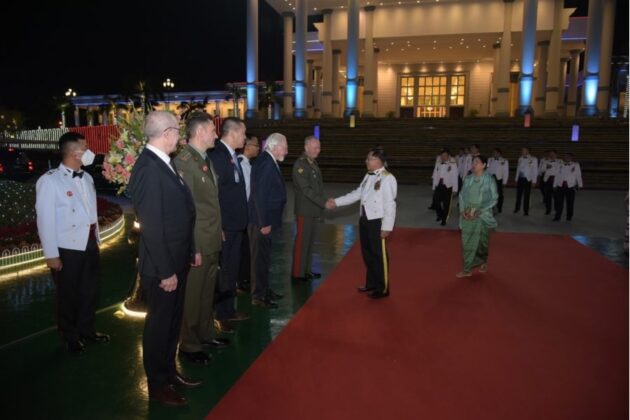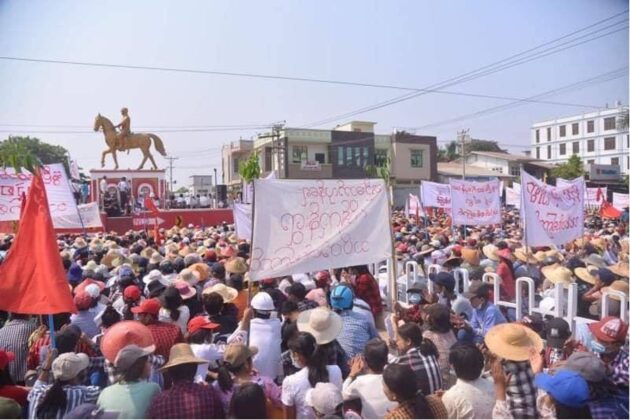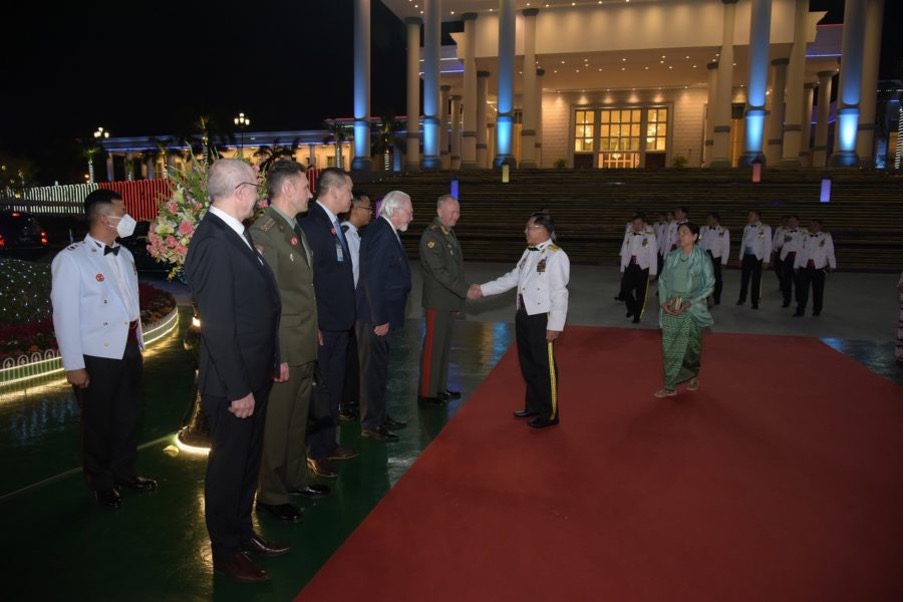5th April 2021
Following on from the report about Russia’s incursions into Myanmar’s domestic affairs, there is a local view from the Irrawaddy which is worth a read.
The presence of Russian Deputy Defense Minister Alexander Vasilyevich Fomin, dressed in his full colonel-general uniform, at the Armed Forces Day celebrations in Naypyitaw on March 27 has caused dismay in the country and raised eyebrows among many foreign observers. Even the Chinese, close allies of Myanmar’s military leaders, are usually more discreet than that.
It has also been reported that on the day before the Feb. 1 coup, a group of Russians and Myanmar colleagues were having a party in Yangon, where the vodka flowed freely. Apparently they were celebrating the opening of a military high-tech multimedia complex in which the children of military chief Senior General Min Aung Hlaing have a financial interest. It goes without saying that they also toasted the coup that was going to be launched the following day.
So, are we any closer to understanding where the support for the coup came from?

The above picture was taken whilst the military was slaughtering dozens of protesters the same day.
While Beijing has vital strategic interests in Myanmar—the only neighboring country that provides the Chinese with direct access to the Indian Ocean—distant Russia is more concerned about making money. With Western embargoes in place and a desire on the part of the Myanmar military policy to reduce its reliance on Chinese armaments, the country has over the past few decades become a lucrative market for the Russian war industry.
Moreover, Russian military instructors have been spotted at a Myanmar airfield, presumably to assist in maintenance of the attack helicopters. Such training is not new however; probably as many as 5,000 Myanmar soldiers and scientists have studied in Russia since the early 1990s, more than from any other Southeast Asian country. In 2007, Russia signed an agreement to build a nuclear research reactor in Myanmar, but construction has yet to be started and may not ever materialize.
Myanmar military personnel have been present at a number of military schools and training facilities in Russia, including the Omsk Armor Engineering Institute, the Air Force Engineering Academy in Moscow, the Nizhniy Novgorod Command Academy, and the Kazan Military Command Academy. Some were also serving as cadets with the Russian Air Force.
Playing “religious diplomacy,” one of the first companies from the Russian Federation that became involved in Myanmar was one from the autonomous Russian republic Kalmykia, a Buddhist republic in European Russia. According to a report on Russian website Kommersant, on March 20, 2007, Kalmykia’s Kalmneftegaz “wins Burma’s Crude, Gas Tender on Religious Fellowship.”
But arms sales have been far more important for Russia’s central authorities than investment in the energy sector. In June 2013, Min Aung Hlaing paid his first of several visits to Moscow at the invitation of Russia’s Defense Minister Sergei Shoigu. A military cooperation agreement was signed in 2016 followed by a visit to Myanmar by Shoigu himself in January 2018.
During talks with Min Aung Hlaing, Shoigu stressed that “Russia is set for development of partnership, strengthening of the armed forces’ combat readiness” and that the militaries of both countries “support regular contacts.” The Russian news agency Tass reported at the time of the visit that the two countries had agreed to “big plans for future cooperation.”
What that “future cooperation” will look like is far from clear in today’s, conflict-ridden Myanmar. There isn’t even a functioning government in power in Naypyitaw. Public anger with Russia runs deep after Fomin’s insensitive performance on Armed Forces Day—the same day that more than a hundred protesters were gunned down by the Myanmar military. And that animosity is not going to go away even if the coup-installed government manages to survive the current uprising against it.
Source the Irrawaddy 5th April 2021.
By entering the already confused situation Russia is exploiting the situation to reinforce its weapons industry, give China a heap of trouble and extend its influence into areas to stop China’s expansion. The west may see conflict with China ahead, but never forget that Russia and China share a border. Russia is very wary of China getting too far ahead.
Meanwhile, the Junta clamps down on the media. One of the bravest journalists, Mratt Kyaw Thu was named on the state TVs news programme last night and has a warrant issued against him. He was one of the top reporters in Myanmar.
Other more worrying news comes from Muse just across the border from Ruili City in China. China has been sending troops into Ruili and the city is locked down, theoretically because of a Covid outbreak.
Below is a clip that claims to show Chinese in Myanmar police uniform. I cannot verify this, certainly they are Myanmar police uniforms, and certainly they are ethnic Chinese, but they could be Myanmar ethnic Chinese.
And in a final interesting development, Elon Musk’s team have stated that they are willing to use his Starlink satellite to provide internet access in Myanmar if the US government allows it.
Meanwhile, the protests continue.

Please share this article so that others can discover The BFD

